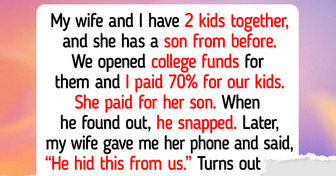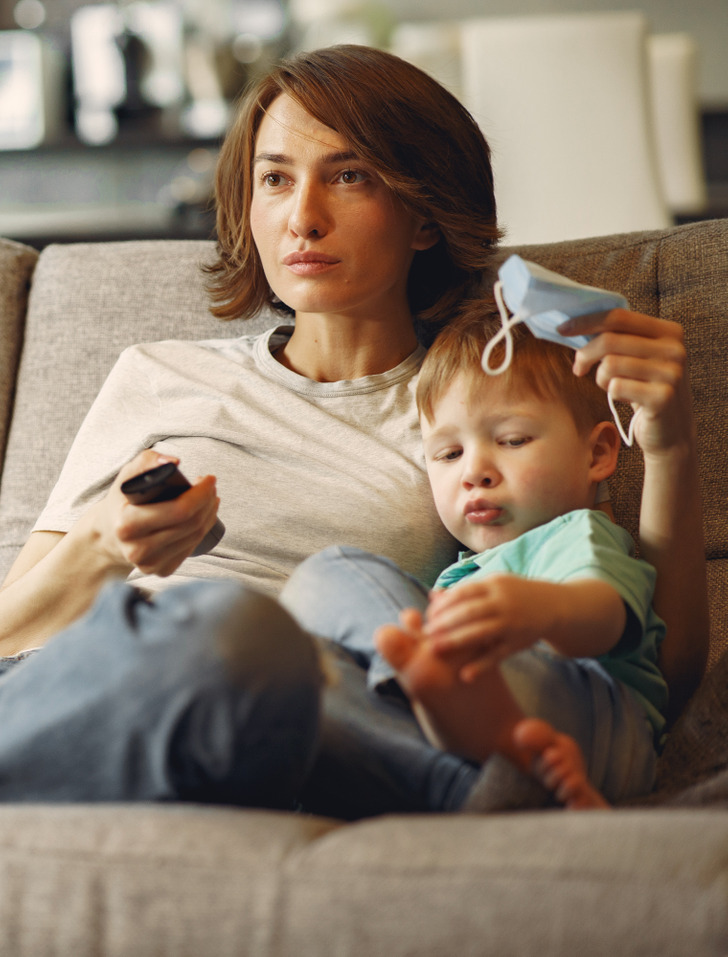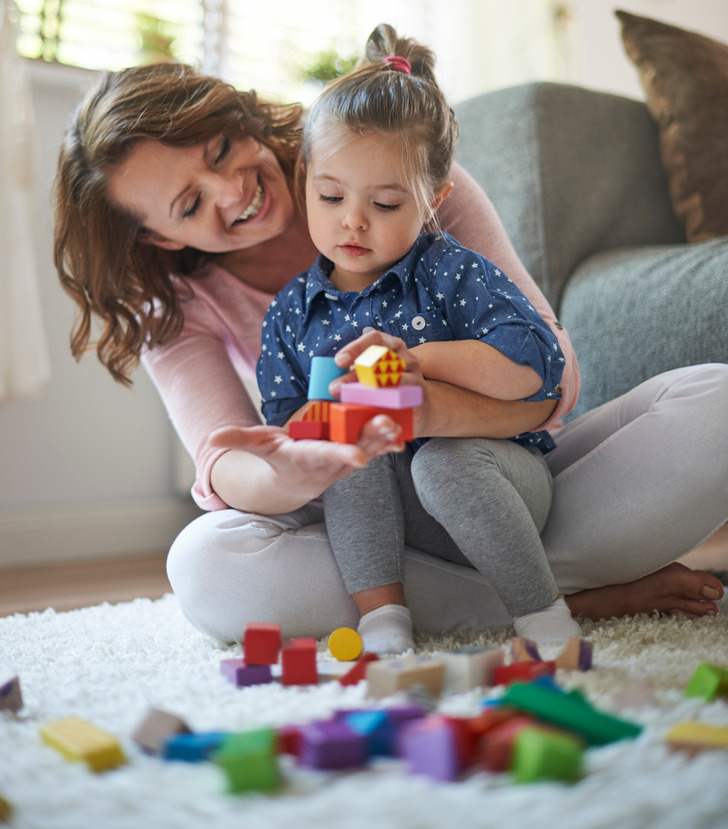Be careful, there already plenty of case suicide by children because anti gadget decision from their parents. I hope you won't regret it when it gets too late.
I Cut Off My 4-Year-Old’s Screen Time, Then the Unthinkable Happened
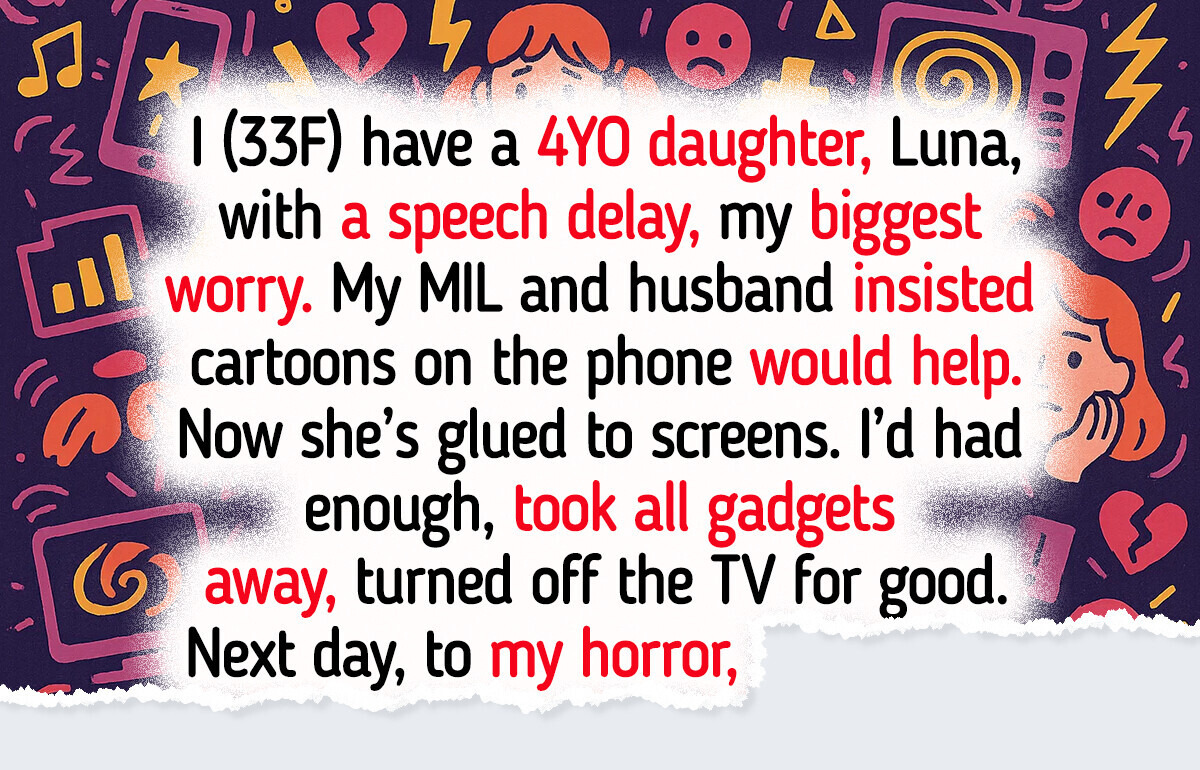
Our reader Nora wrote to us with a story that started with a bold parenting decision: she banned all screens for her 4-year-old daughter. No cartoons, no phone, no TV.
What happened next? She never saw it coming — and neither did we.
Here’s her full letter, detailing a shocking family meltdown no one could’ve predicted.
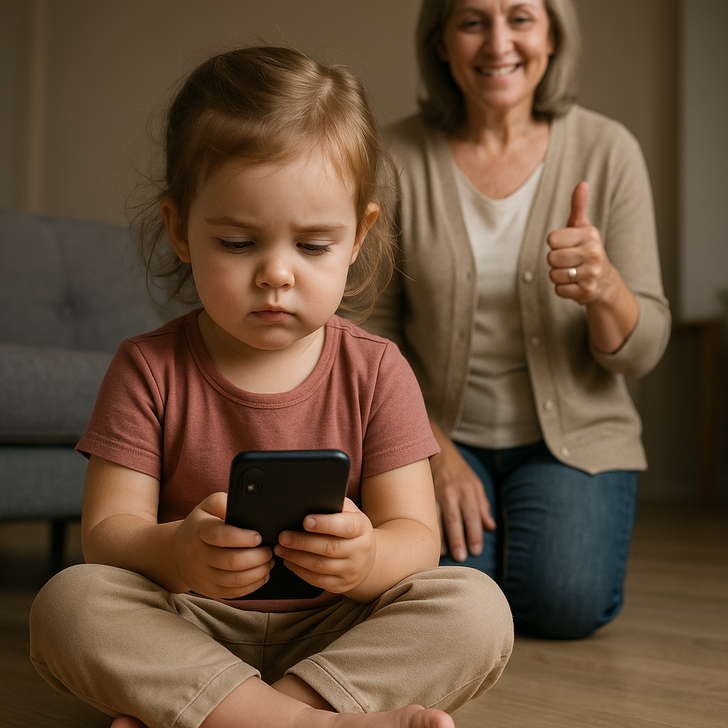
Here’s Nora’s story:
"Hi, Bright Side,
I (33F) have a 4-year-old daughter, Luna, who has a speech delay. It’s not severe, but it’s enough to keep me up at night sometimes. I’ve been taking her to a speech therapist twice a week, I read with her every day, we do little talking games and exercises.
I’m fully involved. I see her struggling, I see the signs, and I’m trying to help her the right way — with real, meaningful interaction. But I seem to be the only one in the family who takes it seriously.
My husband and my MIL believe that “she’ll talk when she’s ready” and that I’m just being dramatic. Their solution? Cartoons. Educational ones, they say. On the phone, on the TV, wherever they can.
“It’s how kids learn now,” my MIL says constantly. “All kids use phones these days. It’s normal. It’s even good for them!”
She keeps sending me reels of toddlers reciting the alphabet from YouTube and TikTok. So while I’ve been carefully managing Luna’s therapy and trying to be present with her, they’ve been doing the opposite — letting her zone out in front of screens because “it’s modern parenting.”
It got worse during the last couple of months. Every time I’d come home from work, Luna was staring blankly at some show, phone inches from her nose, glued to screen.
No conversation. No play. No eye contact. Just noise and colors. I finally hit my limit.
I took away the phone, turned off the TV, and told everyone — including my husband — that Luna was going on a full digital detox. No screens. No animated “learning” apps. We were going back to books, blocks, walks, and actual human interaction.
My husband was pissed. “She likes watching cartoons,” he said. “Why are you making everything harder than it needs to be?” My MIL called me a “helicopter mom.” But I stood my ground.
Then, the next day, I came home early... and, to my horror, found Luna gone. Her stuff was packed. My MIL had taken her to the movie theater to watch the premiere of a new animated film. Without even asking me.
Just... grabbed my child, who we are literally working with a speech therapist for, and plopped her into a dark room to watch more flashing images for two hours. She said, “It’s just one movie! Don’t be so controlling.” I couldn’t even speak.
As if that wasn’t enough, my husband came home that same evening with three new toys. You know the kind — plastic buttons that talk, light up, play music. “They’re interactive!” he said proudly. “She can learn songs and words from them!”
I told him that’s not real interaction. That’s just another passive substitute. Luna needs us — actual people — to talk with her, not at her.
She needs facial expressions, questions, responses, emotional connection. That’s how speech develops. Not from talking bears that say “Let’s count together!”
He rolled his eyes, “You’re blowing this out of proportion.” Maybe I am. Or maybe I’m the only one who actually sees what’s going on. I feel so alone in this.
They act like I’m some monster for wanting to help my child in a way that doesn’t involve screens or buttons. I’m starting to seriously consider divorce and moving in with my mom, who fully supports the no-screen approach and is actually willing to be present for Luna.
But I keep wondering... am I being too harsh? Is it really that bad to use these tools, like they say? Or are they just using “educational” as a convenient excuse to not actually engage with my daughter?
What would you do if you were in my shoes?"
Thank you, Nora, for having the courage to share such a deeply personal and urgent story with us. The struggle between children and gadgets is a battle many parents face today—and your situation pushes that conflict to the limit. Your bravery in speaking up will resonate with countless families.
Below are some practical Bright Side tips backed by psychologists, speech therapists, and child development experts—aimed to help you regain balance and connection without vilifying anyone.
1. Establish clear & consistent screen-time rules.
Many parents stress over how much time their kids spend staring at screens—but figuring out the “right” amount can be tricky. A good place to start is by looking at the bigger picture of your child’s well-being.
Are they getting enough rest and physical activity? Are their grades holding steady? Do they regularly connect with family and friends? Are they interested in offline hobbies like playing an instrument or kicking a ball around?
If the answer to most of these is yes, then screen time probably isn’t a major issue. But if devices start replacing sleep, schoolwork, or real-world fun, it might be time to set some boundaries.
Define what’s allowed, when, and why. Consistency is key—kids test the limits more when boundaries are unclear. Let Luna know, for instance, “No gadgets on weekdays; one cartoon on Saturday.” Stick to it, even when it feels tough.
2. Replace screens with intentional interaction.
Plan daily talk-and-play sessions. Use shared storytelling, sing-alongs, or pretend games to stimulate speech naturally. Research confirms that speech development slows when screen time replaces real interaction.
Here’s one way to look at it: Every hour a child spends on a screen is an hour not spent talking, reading, playing, or connecting with others in person.
The early years of childhood are incredibly important. It’s when the brain is growing fast and soaking up language like a sponge. The way kids learn to communicate during this time lays the groundwork for their future. And those essential skills don’t come from screens—they come from real-life interactions, like listening, copying what others say and do, and engaging with the people around them.
3. Model healthy digital habits.
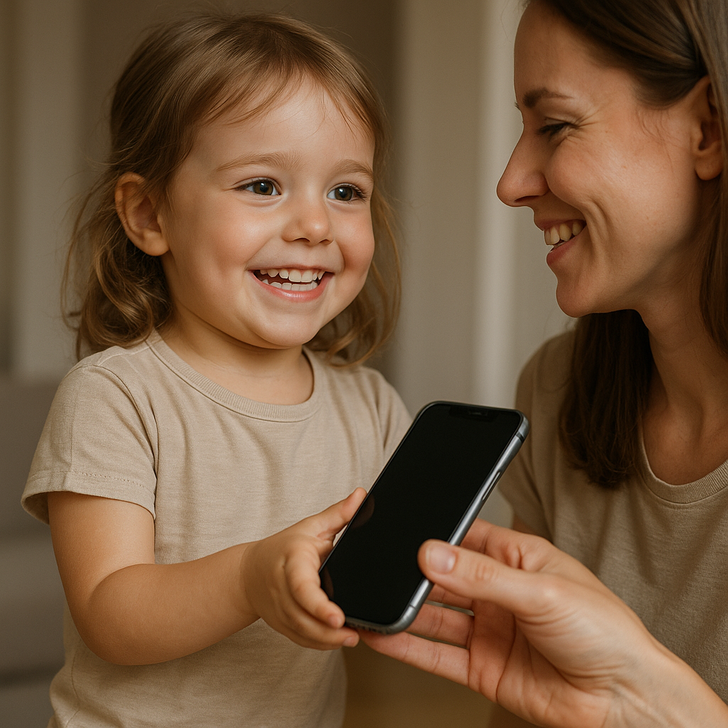
Don’t be afraid to say “no” to Luna next time she’ll want to take a phone. Once kids dive into YouTube or get hooked on a game, getting them to stop can feel like trying to yank a lollipop from a lion. It’s tough—really tough.
This often leads to a standoff: either a full-blown battle with tears and yelling, or parents backing off to avoid the chaos. Many parents are genuinely scared to say “no,” not because they don’t care, but because they dread the meltdown that might follow.
And this fear only multiplies when you’re out in public. Some parents openly admitted they sometimes give in just to avoid "the scene"—you know, the crying, the yelling, the public spectacle. Not because they’re lazy or permissive, but because they’re human. No one wants to be that parent—the one whose kid is melting down in a restaurant while the whole place goes awkwardly silent.
So, instead of saying “No”, parents often choose peace in the moment. They fear the tantrum will ruin not just their night, but everyone else’s too—whether they’re out with friends, dining with other families, or just trying to survive a vacation without losing their minds.
4. Communicate calmly & collaboratively with family.

Hold a respectful conversation with your husband and MIL. Acknowledge their intentions (“I know you want to help Luna”) but explain the evidence: too much passive screen time can actually hinder speech.
Suggest occasional shared screen use—like watching one educational show together and discussing it afterward—to keep them involved without giving free rein.
And here’s yet another hi-tech conflict in the family. This time, between a stepmother and a stepdaughter. Stepmom took it upon herself to make her home feel safer, so she installed cameras.
One of them was in her teenage stepdaughter’s bedroom. When her stepdaughter discovered the camera, the fallout wasn’t just emotional — it was explosive. And the consequences?
Let’s just say: things in the woman’s household have turned to one big catastrophe. Read her letter here to find out the details of this story.
Comments
Related Reads
I Refused to Help My Brother’s Family, I’ve Sacrificed Enough
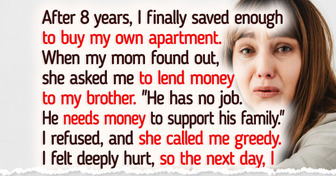
8 Pedicure Colors That Are Dominating This Summer Season

I Will Never Take Care of My Aging Parents Until They Follow My One Golden Rule
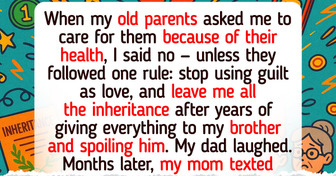
12 Stories That Prove Little Acts of Kindness Never Stay Little
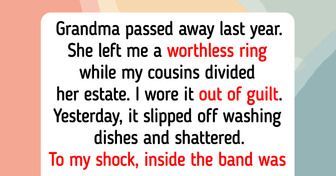
18 Stories That Prove a Cleaner’s Job Is About More Than Just Dusting
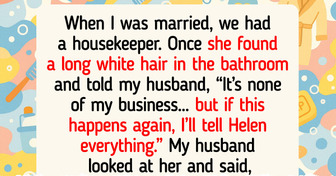
I Wasn’t Invited to My Son’s Baby Reveal, and It Led to a Painful Discovery
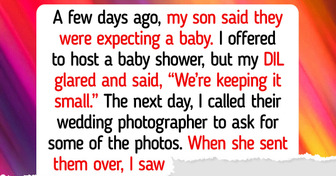
16 Men Who Proved True Love Isn’t About Big Words, but About Quiet Actions That Melt the Heart
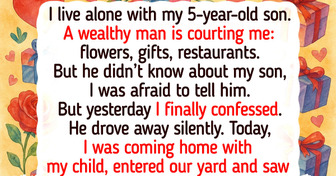
I Walked Out of the Family Reunion After My Stepdaughter Handed Me a List of “Rules”
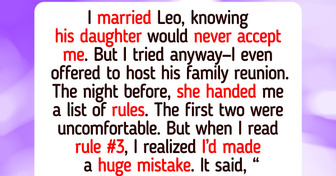
14 Mother-in-Law Moments That Became a Legendary Family Story
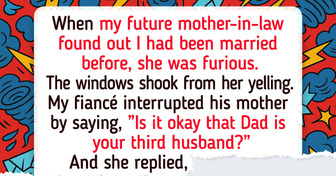
15 Times Someone Showed Kindness Without Saying Anything
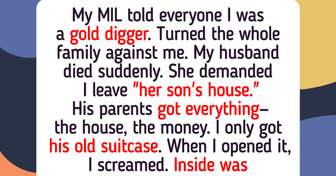
I Let My MIL Join Our Family Trip—And It Turned Into Chaos
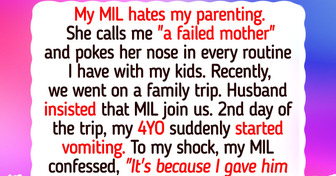
I Refuse to Pay Into My Stepson’s College Fund—I’m Not His ATM
